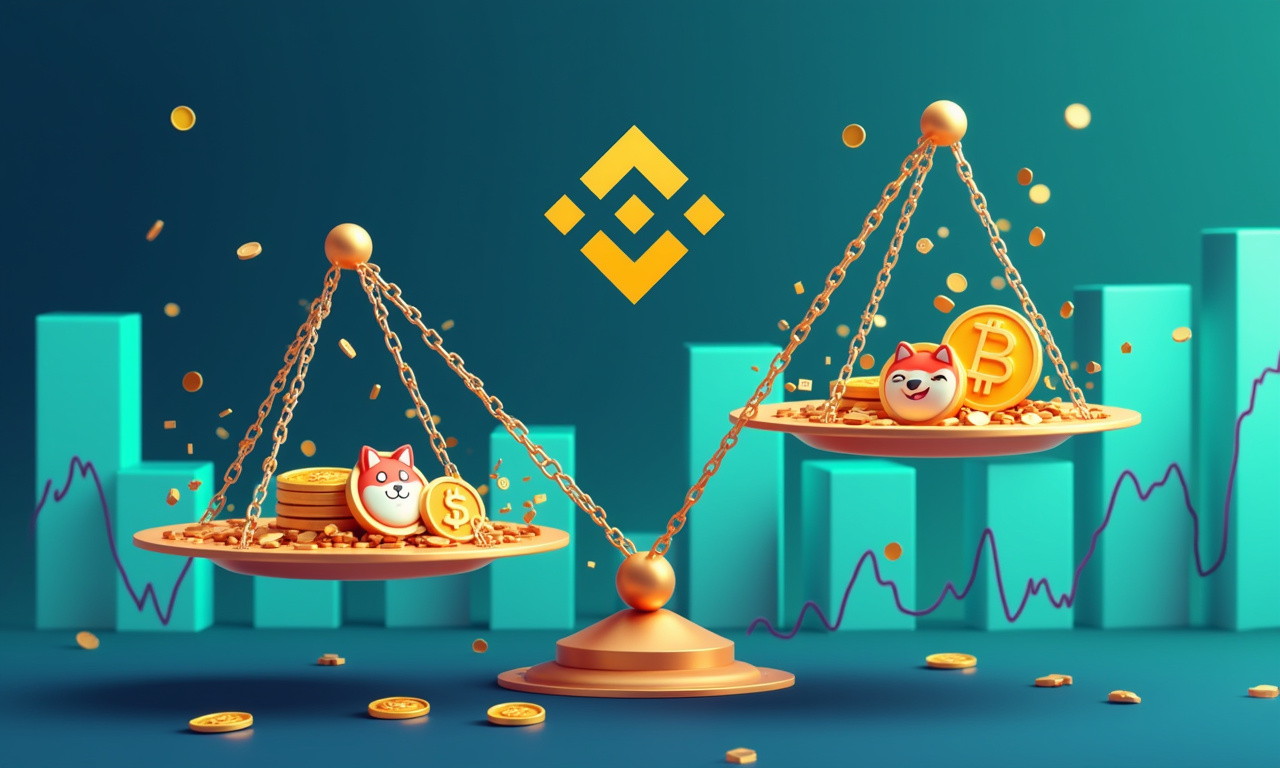An insane contrived speculation driven tidal wave of Doge clones and frog themed tokens… Is Binance going completely off the deep end, or is there a plan behind the pandemonium? The knee-jerk reaction here is to yell “tulip mania”—but hold on a sec and let’s consider the data. In fact, during the last bull run, traders traded more than $75 billion worth of meme coins. Now, Binance is certainly interested in getting a slice of that very profitable market.
Seed Tag Removal: Data-Driven Decision?
Binance recently deleted the “Seed Tag” for BONK, PEPE, PENGU, EIGEN and ETHFI. This is where things get interesting. Binance withdraws assets for several different reasons. These incorporate team dedication, creation action, trading exercise, network soul, as well as neighborhood store. Are these criteria being used objectively, or is it merely PR spin?
Let's be frank. “Community Sentiment” is about as quantifiable as a long range weather report. But trading volume and liquidity are impossible to fake. What we need to see are sustained, healthy trading volumes on many exchanges—not just Binance. If those order books are deep enough to take in big, wave-like trades without breaking the price, then sure, take away the Seed Tag.
I dig deeper. I would like to be presented with blockchain analytics that demonstrates steady, ongoing development activity. I’d like to see proof of legitimate, real-world use cases (other than just being a vehicle for speculation). I would like to see a more diverse and inclusive holder base. It’s crucial that we don’t allow a few whales to dictate 90% of the supply. If these coins can survive scrutiny, then that is questionable. In that case, the Seed Tag removal looks more like a calculated gamble than a data-driven decision.
Trading Pairs: Strategic, Not a Pump?
Unlike new coin listings, their addition – and thus demand – for these new trading pairs (ETC/USDC, GRT/USDC, ROSE/USDC) did not immediately kick off sizable price pumps. From a purist perspective, this shouts that Binance has no intentions of manipulating prices. Instead, they’re just opening up more ways for traders to get to assets that already exist. Consider it the equivalent of adding a new lane to a highway. Sure, it could improve network operations and relieve capacity constraints, but it doesn’t magically make people drive 15 miles an hour faster.
That’s a far cry from the speculative mania driven by hype and excitement over new meme coin listings. Binance is playing a different game here. They're not necessarily endorsing these coins; they're simply providing a platform for people to trade them. And look, let’s face it, if you don’t do it, somebody will. It might as well be the exchange with the strongest security and premium liquidity, then.
These explanations do not apply to the removal of spot trading pairs such as ACT/EUR. This is where the libertarian side of me gets a bit uncomfortable. While I believe in the freedom of individuals to invest in whatever they choose, I believe in transparency and fair access. When exchanges remove trading pairs, it creates massive disruptions to a trader's liquidity and price stability and can even potentially trap traders.
To do better, Binance should be transparent about the criteria it uses to delist trading pairs. Are they subject to release on entirely objective metrics such as trading volume and order book depth? Or is it something else, more opaque and nefarious?
Binance’s VIP Loan updates (NEWT, SAHARA added) are a drop in the bucket. These coins didn’t moon simply by virtue of being added as loanable assets. The core issue remains: Is Binance recklessly chasing meme coin hype, or is it strategically positioning itself to profit from a growing market segment?
The Real Question: Risk Versus Reward?
The silver lining here is that Binance isn’t just throwing money at meme coins willy-nilly. In some ways, that’s good—it’s making smart decisions, though highly reckless ones. The exchange’s ambition is to attract a significant amount of the ongoing meme coin craze. Simultaneously, it is taking steps to mitigate possible negative effects.
Isn’t there some sense of injustice to all of this? Yes, there is.
| Potential Benefits for Binance | Potential Costs for Binance |
|---|---|
| Increased trading fees | Reputational damage |
| User acquisition | Regulatory scrutiny |
| Market share | Risk of supporting scams |
Can Binance really cash in on the meme coin bonanza without putting its users at risk? That’s the great question. Only time will tell. One thing is certain: the meme coin market is not going away anytime soon, and Binance intends to be a player.
Is it a gamble? Absolutely.
Is it chaos? Not necessarily.
Is there an element of unfairness to all of this? Yes, there is.
The real question is whether Binance can strike the right balance between profiting from the meme coin frenzy and protecting its users. Only time will tell. But one thing is certain: the meme coin market is not going away anytime soon, and Binance intends to be a player.




